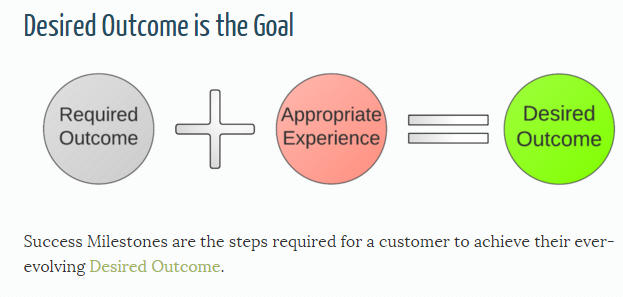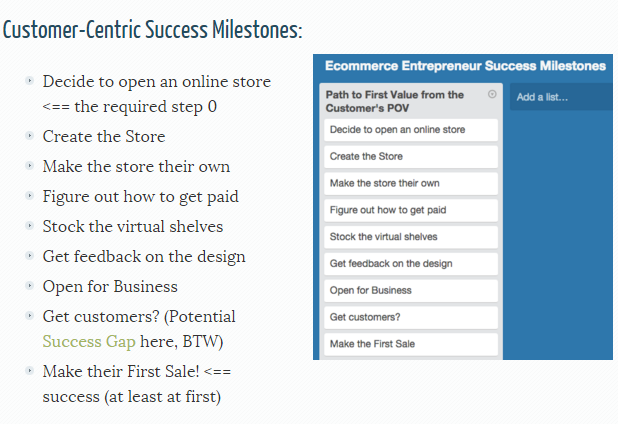
What’s the state of customer service in your SaaS? If there’s one thing that no SaaS should ever lose sight of, it’s that “service” part intimated by the second “S”, yet many are giving their competitors an ‘in’ by not giving customer service the focus it requires.
This is especially prevalent in earlier stage start-ups and could foil efforts to grow rapidly by increasing churn rates. Remember, it’s usually pretty easy for a SaaS customer to hit the “cancel account” button if they’re unhappy; it’s not the same to them as larger pieces of infrastructure which have cost them more money and they tend to think twice about.
As Kissmetrics points out, it can be tempting to focus more on creating perfect software rather than the service piece, but your SaaS should remember you are not just a product – you are a service. You’re missing at least 50% of the equation if service isn’t of a high standard.
Terms you’ve probably heard of like “customer experience” and “customer success” form important parts of your full customer service strategy. If you want to build an overarching culture that puts the customer at the center, then you need to consciously implement a few strategies which serve this objective, even if you’re at an early stage.
Know Your Customer Success Milestones
“Customer Success is when your customers achieve their Desired Outcome through their interactions with your company.” Lincoln Murphy
Customer success milestones are dictated by the customer – they are about the steps involved for the customer to achieve their desired outcome/s from your product. This means that the product itself is not the center of service, the customer is. As Lincoln Murphy further states, for the customer, the desired outcome is the sum of their required outcome plus an appropriate experience.

Image: Sixteen Ventures
Sure, your SaaS has product-based desired outcomes which probably involve goals like convincing customers to upgrade to your next tier, but the idea is that if you focus on helping the customer achieve their desired outcome, then you’ll more than likely achieve your goals too.
Identifying your customer success milestones also means that you’re able to assess them and proactively look for and resolve any gaps which impact on customer experience.
What does a customer success milestone look like?
So if customer success milestones are about achieving the customer’s desired outcome, what are some examples of what they might be? As explained in Sixteen Ventures, customer-centric milestones sit alongside the product-based milestones which get them there.
Your first step is to understand what success looks like to your customer (ask them what their goals are for your product if you’re not sure). For example, success in the customer’s eyes could be: “my entire invoicing system is automated” or “I reduce customer churn by X%” – figure out what that looks like for your SaaS.
From there you can map out the milestones to get there from the customer perspective. Here is an example for an e-commerce store-builder from Sixteen Ventures:

Appropriate Experience
The experience the customer has along the way to achieving those success milestones is really the “secret sauce” which either delivers or doesn’t deliver a desired outcome. They might create that online store and even be making sales, but if the process to achieve those milestones was difficult or unpleasant in any way, they haven’t received their ultimate desired outcome.
You could have the best list of features ever, but they’re of no value to the customer if your SaaS isn’t actively supporting them with information on making use of the functionality and what benefits it will have for them. To do this successfully, you need to be proactive at each stage of the customer journey.

Image source: For Entrepreneurs
The following sections look at some strategies for providing your customers with that appropriate experience throughout their journey.
Have Documented Standards
Assuming you’ve already hired people with a high level of customer-facing skills (perhaps along with technical skills if you’re a small, early-stage startup), make sure that you have set and documented customer interaction standards.
As customer service consultant Micah Solomon says, even if your team has the best customer-facing aptitude in the world, they need guidelines based on the best-practices of world-class customer-centric companies. Don’t leave them to muddle through on their own – this could lead to inconsistent experiences for customers. Ideally you want to know that the same customer can call back, get a different team member but still have an excellent experience and be given information consistent with what the last person told them.
Get Everyone Involved
Your organizational chart
Putting the customer at the center of your business involves everyone, including those in roles not traditionally “customer facing.” Some SaaS have successfully done this by rearranging their organizational charts so that they are more customer-driven.
For example, Outright (now GoDaddy bookkeeping) aligned theirs with different stages of the customer journey, with dedicated teams, including developers, product managers and designers for each stage. This way they are acknowledging that a new user will need different ways to get value from the product than an established user and they can be more focused on meeting the needs of each stage.
Rotate everyone through customer support
If you have a slightly larger team, it can be tricky to ensure that “back-office” roles don’t lose touch with the customer. Many organizations (SaaS or otherwise) work to keep the customer front-of-mind in all team members by rotating them through the customer support function.
Team members don’t necessarily all directly talk with customers (especially if this is not one of their strengths), but sitting and listening in for a couple of hours every quarter is also a good way to ensure they don’t lose touch.
Offer Quality Self-Service Options
Ideally, if a customer wants to know how to use something or has a question about your product, they should be able to easily find answers themselves. Most don’t want to have to contact you about it, especially if it’s something that could easily be dealt with in training materials or on an FAQ page.
Self-service options could involve offering free trials, demonstration videos, other training modes such as email courses and blog posts, or putting an FAQ page up on your website. “If it’s something customers are likely to ask about, either fix it so there’s no question to ask next time or make the answer easy to find without having to contact you.” (Micah Solomon)
Be There
It’s a basic of customer service really, yet in the busy environment of an early SaaS, always making yourself available should the customer call on you is often overlooked. Prioritize building relationships with your customers and be prepared to drop everything to serve them if they call.
Include minimum service standards in your documented customer service procedures which state how quickly customers should be responded to on the phone, by email, on live chat or by any other method you use. It may be a hustle, especially if you are a young company, but customers will reward you for being available to them and building a strong relationship with them.
Final Thoughts
If you want your SaaS to be successful, you should always prioritize customer service at least as much as building a quality software product.
Know your ideal customer well; build out profiles of what that customer looks like, understand their desired outcomes and map out the success milestones they need in order to get there.
All along their journey, your customers should be met with outstanding support and feel like they are genuinely a priority of yours. Make it easy for them to ask and receive help, but also to find answers for themselves.


